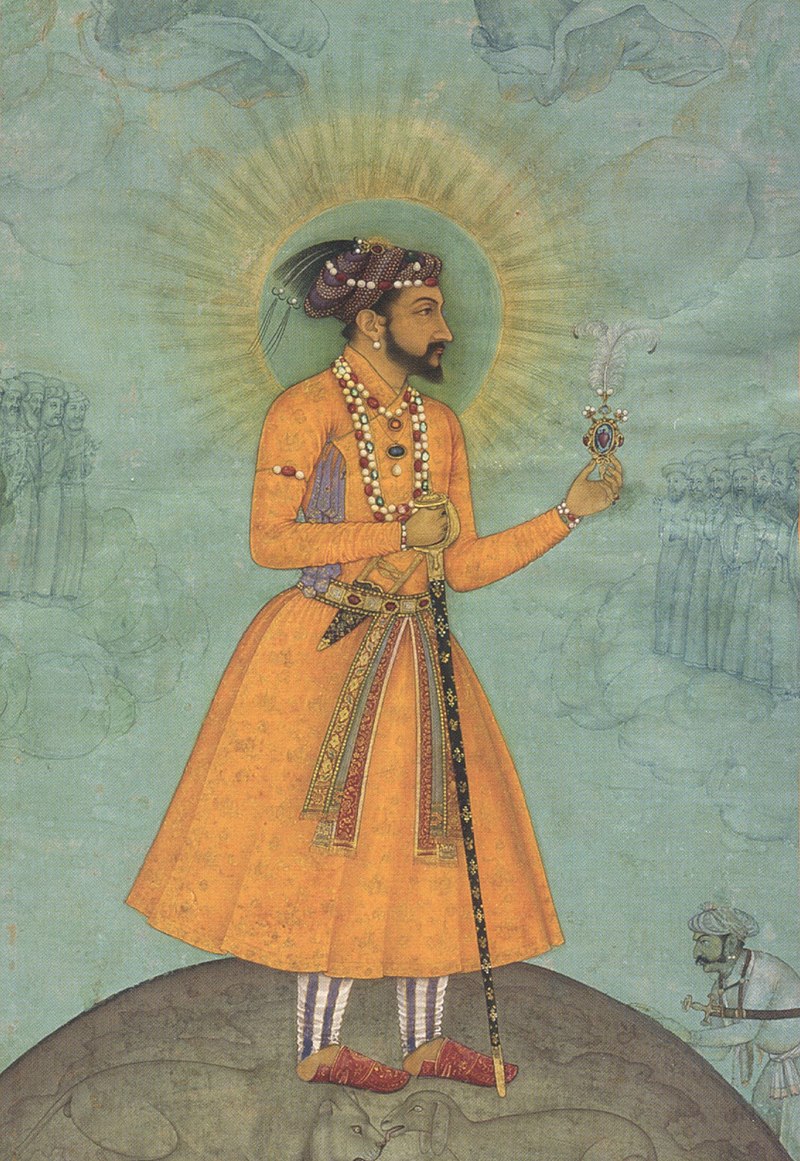Shah Jahan was also known as Khurram, whose mother was the Hindu Jagat Gosain, and was married to Arjumand Banu Begum (Mumtaz Mahal). He was crowned in Agra in c. 1628 CE; had to face an instant revolt by Bundelas under Jujhar Singh and Khan Jahan Lodi, the Mughal governor of the Deccan. Khan Jahan Lodhi, to secure help in times of necessity, gave away Balaghat to the Nizam Shah, to which Shah Jahan objected and ordered Khan Jahan Lodi to recover it.
As the latter failed, Shah Jahan recalled him to court. Khan Jahan, however, turned hostile and took shelter with Nizam Shah. This infuriated Shah Jahan and decided to follow an aggressive policy to recover the lost territories of the Deccan. Shah Jahan followed the Deccan policy of his predecessors. During the reign of Akbar, a part of Khandesh and Berar was annexed to the Mughal Empire. Jahangir tried to conquer Ahmadnagar but he could not do it as its Prime Minister Malik Ambar opposed the Mughal forces very bravely. He was a great warrior of his time.
After the death of Malik Ambar, his son Fateh Khan became the Prime Minister of Ahmednagar. He was a contemporary of Shah Jahan. Taking that opportunity, Shah Jahan paid heavy bribes to Fateh Khan and conquered Daulatabad. After that Ahmadnagar was annexed to the Mughal Empire in 1633.
Shah Jahan next proceeded against the rulers of Golkonda and Bijapur and they submitted to the Mughal ruler out of fear. In 1636 CE, ahdnama (treaties) were signed with Bijapur and Golconda. The main points of agreement with Bijapur were, Adil Shah accepted the Mughal suzerainty, he was to pay 20 lakh rupees as indemnity, he was not to interfere in the affairs of Golconda, and Mughal Emperor was to arbitrate in case of any future dispute between Bijapur and Golconda. Also, Adil Shah was to help Mughals in conflict against Shahji Bhonsle (father of Shivaji).
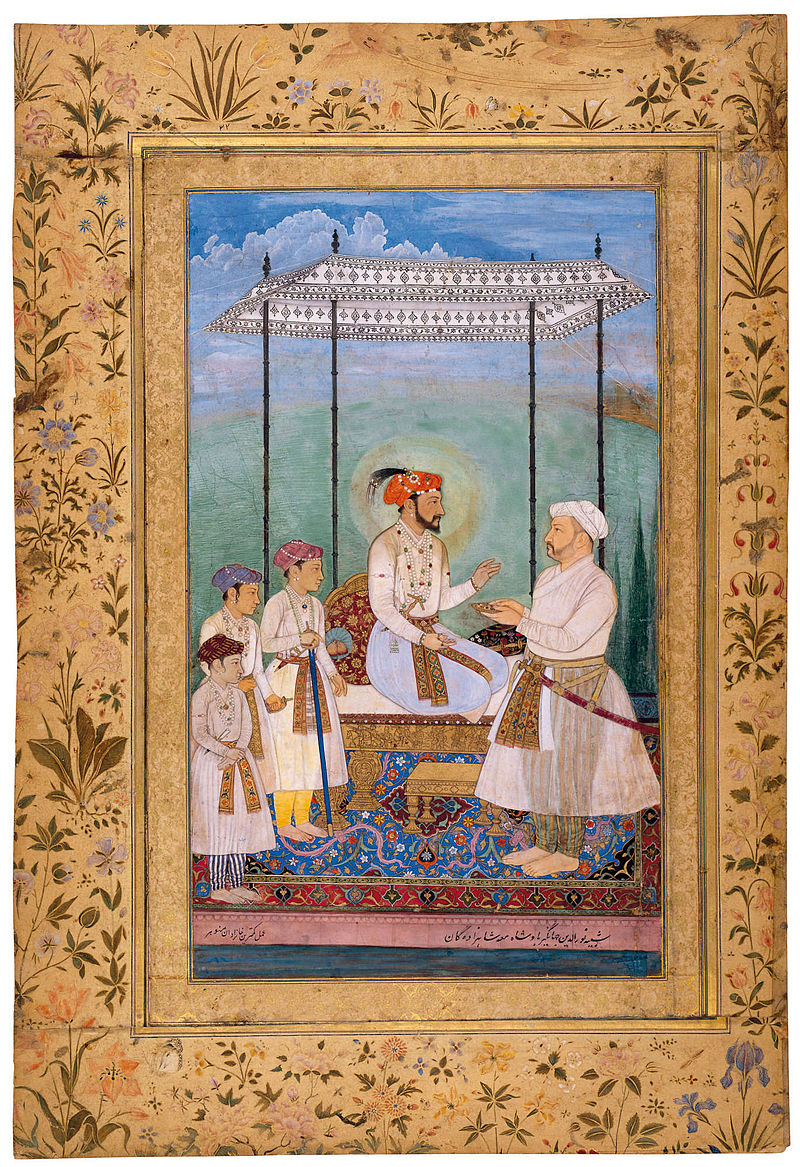
They accepted the Mughal supremacy and paid huge tributes. Shah Jahan appointed his third son Aurangzeb as the Governor of Deccan in 1636. After some time Aurangzeb left the Deccan to become the Governor of Gujarat and to head the Mughal army in Central Asian campaigns.
North-West Frontier Policy of Shah Jahan
There was a long drawn conflict between India and Persia over the possession of the fort of Kandhar. The Persian emperor conquered Kandhar during the reign of Jahangir and the frontier became unsafe. Though Shah Jahan recaptured the fort, he had to house it again to the Persian ruler Shah Abbas II in 1648. It was a severe blow to the prestige of the Mughal Emperor. Shah Jahan sent three expeditions one after another under the leadership of his two sons Aurangzeb and Dara but they failed. There was a great loss of men and money. And the North-west Frontier remained exposed to dangers.
The Central Asian policy of Shah Jahan like his North-west Frontier policy failed. He sent the Mughal army to conquer Samarkand. The Mughal army conquered Balkh and Badakhshan on the way. But the Mughal rule could not be established there as the local people were hostile to outsiders.
The Uzbek tribes of Central Asia fought against the Mughals ferociously. Aurangzeb could not suppress them. Thus, there was a permanent loss of Gandhara.
Religious and Language Tolerance
Shah Jahan preached equality among Hindus and Muslims. He introduced various new policies to unite all religions. As a result, his reign worked for 30 successful years. He used to celebrate all the festivities of Indian origin and tried to converse with every problem.
Hindavi, the origin of the Hindi language, was introduced in his court. Realizing that everyone could not speak Persian, he introduced a new court language, which maintained a perfectly balanced mixture of Sanskrit and Persian.
Reforms introduced by Shah Jahan in the Ain-i-Dahsala system
The rate of Land Revenue was increased. This didn’t necessarily mean an extra burden on the peasantry because he abolished the number of miscellaneous ceases paid by the peasantry along with Land Revenue (Ab-wba). The concept of Nabud was abolished. This system extended to Deccan by Murshid Kuli Khan.
Mughal Kharkhanas
The term Kharkhana refers to a factory/workshop at times. It was also used in the context of a warehouse. This Kharkhana formed an important component of the Mughal economic system. The needs of the state at low cost contributed to the revolt progress of the economy by inventing new designs & technologies. There was a separate department to look after Kharkhana head of this department was known as Deewan-i-Batai during the reign of Akbar. During the reigns of Jahangir & Shah Jahan Mir-i-Saman was head of Kharkhana.
6 types of Kharkhana were mentioned in contemporary records these were meeting different needs of state agencies. These 6 Kharkhana dealing with the needs of courts, palace, military officials animals & storehouses. Kharkhana was maintained by not only the state but also by Nobel & Zamindars. All of them require factories to meet the needs of their establishments. Best of craftsmen were employed in these Kharkhana on salary. Every Kharkhana was under the administrative responsibility of an officer – Daroga, this officer was having a specialized knowledge of crafts in which Kharkhana.
Some important monuments related to Shah Jahan
Shah Jahan waster most of his administration in the construction of useless monuments instead of resolving the war of succession going within his sons. Few of those monuments which are still alive and presently secured by archaeological survey of India.
The Red Fort
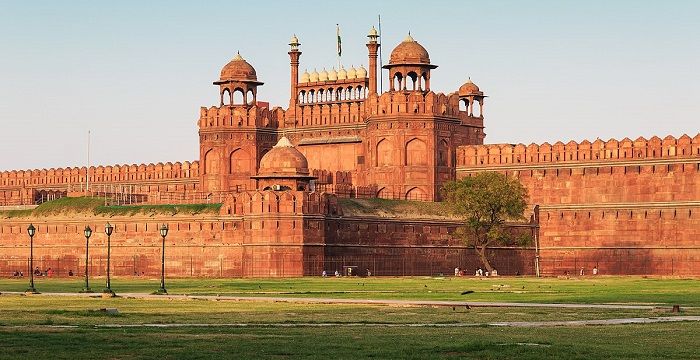
Shah Jahan’s next great creation was the Red Fort of Delhi. It took almost nine years for completion. The buildings inside the Red Fort are the Moti Mahal, Hira Mahal, Rang Mahal, the Diwan-i-Am, and the Diwan-i-Khas. These are the most wonderful marble structures with attractive decorations. Out of them the Diwan-i- Khas was the most ornamented and decorated with precious stones. It was the special chamber of the Emperor.
The Jam-i-Masjid

The Jama or the Jam-i-Masjid of Delhi is another great creation of Shah Jahan. It is a structure of red sandstone. It is huge and spacious in size. The entrance to the Mosque looks majestic. It took six years for completion.
The Taj Mahal
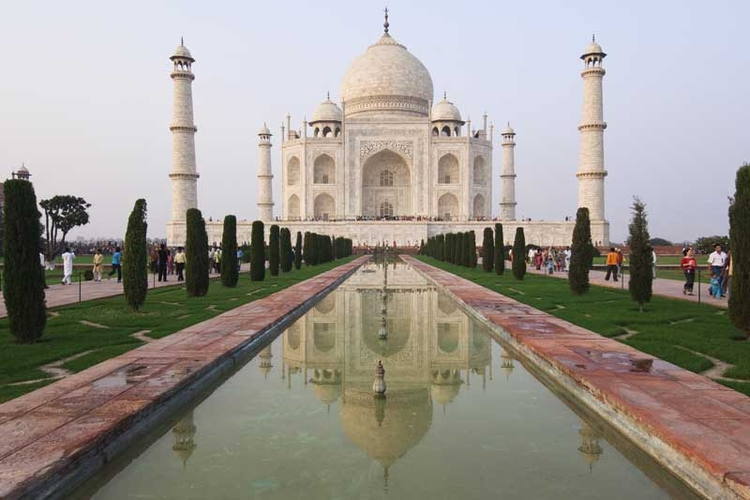
The Taj Mahal at Agra is the best monument of Shah Jahan. It is famous as one of the wonders of the world. He built it in memory of his beloved wife Mumtaz Mahal. The best builders from the Empire and also from abroad were engaged to build it. The foreign traveler Tavernier wrote that the Taj Mahal was built in 22 years and three crores were spent for its construction. It is indeed a “Dream in the marble.” It is the crowning glory of Indo-Islamic architecture.
Peacock Throne
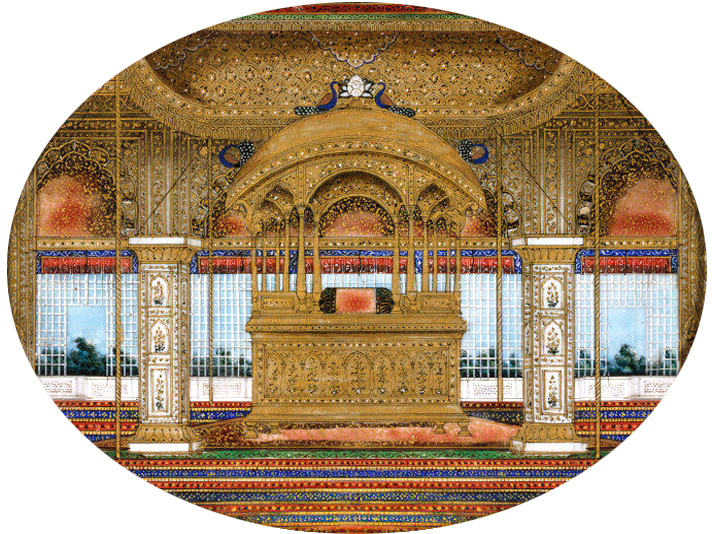
Apart from all these architectures, Shah Jahan made a beautiful and fabulous throne famous as the Peacock Throne for himself. It is said that precious jewels worth 86 lakh rupees were spent for its construction at that time. One lakh tolas of gold were used in its body. When finished, the peacock throne became 3 yards x 21 yards, and 5 yards in height. Its canopy was covered with rubies and gems.
The canopy was supported by twelve pillars made of emerald. Two peacocks were designed on each pillar with gems fixed on them. Between each pair of peacocks, a tree was designed, with rubies, diamonds, emeralds, and pearls fixed on it. This was like a fine piece of art made in jewels. Unfortunately, this precious throne was taken away from India by invader Nadir Shah later on.
Shah Jahan’s time was the golden age of the Mughals for its superb development in art and architecture. But beneath if, there were some signs of weakness which have created some amount of hesitations in the minds of the historians to give the credit of his age as the golden age. The loss of Kandahar, tragedy in Central Asia, famines in Deccan and Gujarat, and above all, the war of succession which broke out, showed the darker side of Shah Jahan’s regime.

